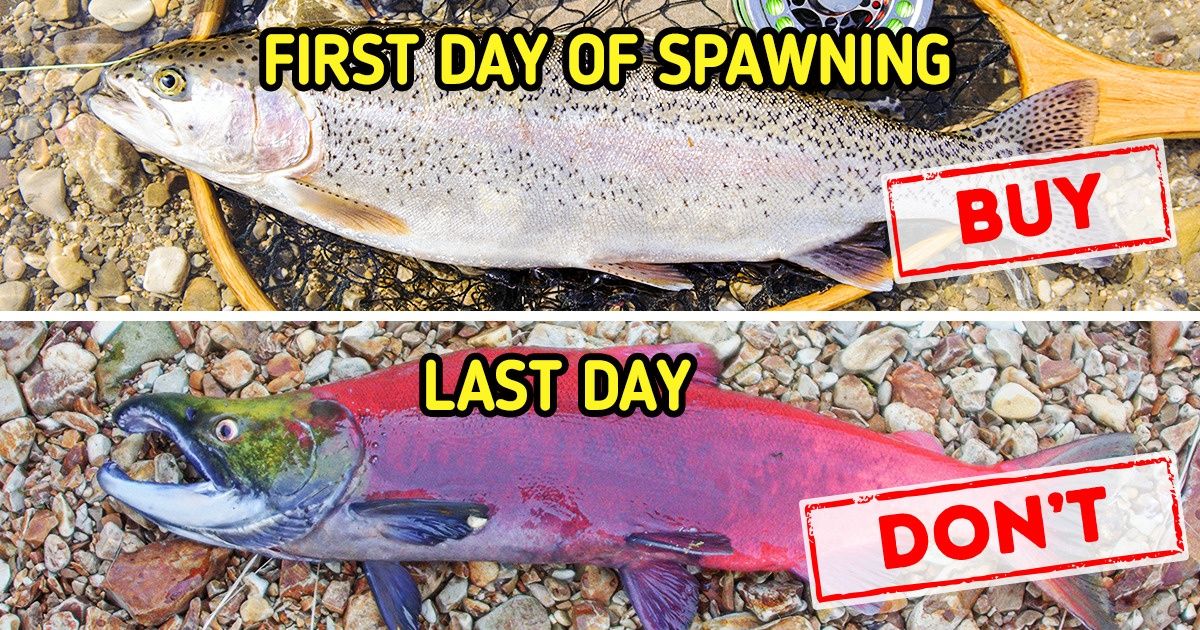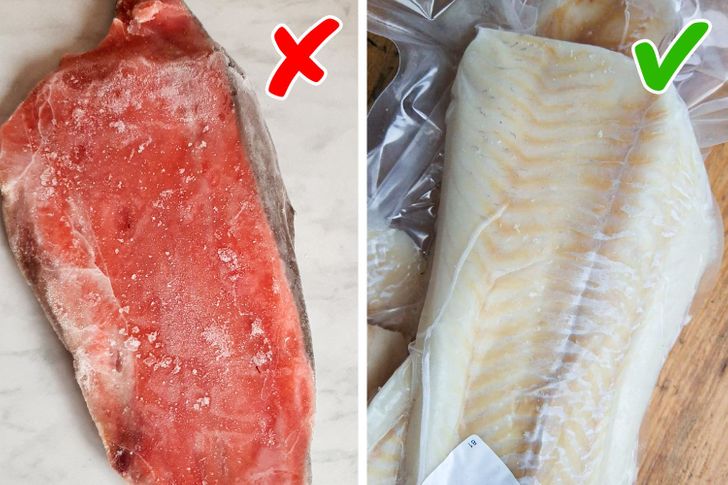15 Stories That Remind Us to Stay Kind, Even When the World Isn’t


We at Bright Side decided to find out how to choose good fish to eat and enjoy.
Let’s try to figure out why caviar in fish is an unpleasant bonus. Salmonids are a big family of fish. Some of them spend their entire lives in freshwater, while others migrate. The Pacific Ocean salmonids reach puberty and move from seas and oceans to put eggs in freshwater. As soon as the fish enters the river, all its systems start to degrade. The hormone system is then rebuilt.
The meat in such fish is watery and pale. It happens because the fish stops eating. The muscles start to lose their color because the fish doesn’t consume carotenoids anymore.
Such fish aren’t bad for your health, but the quality is really poor. These fish become dangerous when the spawning changes are really visible. They have giant teeth, the nose changes into a huge beak, and the color of the scales change. For example, coho salmon turn a raspberry color, and chum salmon become dark olive. Pink salmon develop a hump. Bacteria start to appear in such fish.

Very often, defrosted fish is sold as “chilled” fish. You can tell the difference by looking at the meat, which will look watery. Very often, defrosted pieces are deformed. Also, if a piece was defrosted in the wrong way, bacteria start to appear in it very quickly.
Dishonest manufacturers can even try to sell fish that wasn’t stored the right way or that was frozen twice. Such fish is not tasty and it loses most of the nutrients. Also, it might be covered with microorganisms from the surfaces of where it’s being kept and the hands of the personnel. And this becomes even more common in fish fillets. So if the color and texture seem odd, or if there’s a layer of ice in direct contact with it, you’d better ask the salesperson (if you trust them) about it or think twice before buying it.
Dishonest manufacturers have 2 ways of selling a piece of fish that is several times more expensive: by covering the fish with a thick layer of ice or pumping it with polyphosphates. The ice is pretty obvious, but it’s much harder to spot the polyphosphates.
Polyphosphates are the chemicals that keep the moisture inside a piece of fish or a cut of meat. The pieces are put into a solution, they increase in size, and then they’re frozen. In small quantities, they are harmless for people, but they tend to cost a lot. The surface of the fish will appear shiny — and this is a dead giveaway. After defrosting, the meat is mushy and milk-like juice comes out of it.
The best fish is live fish. You can buy them from the fish tanks in supermarkets. But there are some nuances here. Such fish are usually bought from farmers where they’re specially bred. Look at the fish tank closely. It should have a compressor, and the water should always be clean.
There shouldn’t be too many fish in the tank. A healthy fish swims without making any sudden movements. It shouldn’t stop for a long time or swim upside-down. Any sort of damage on the fish, like strange spots or the absence of scales, means you shouldn’t buy it.
Around 50% of all the fish we see in supermarkets are grown on farms. Despite popular opinion, fish from farms are worse than wild fish. Farmed fish live in huge groups in small pools. To prevent a very fast spread of infection, the fish are fed a huge amount of antibiotics and pesticides.
Over time, bacteria develop resistance to antibiotics, which leads to a breakout of infection. If possible, buy fish that was naturally caught. On the pack, there should always be some information about where the fish was bred. Ask a salesperson if there’s no info.
Before buying fish, you should touch it and look at it closely. Good chilled fish should have big light eyes without any blood present. The fish should be elastic.
Press the body with your finger. After you do this, there should be no marks. If there are marks, either the fish is not fresh or it went through a defrosting process. Another way to check the quality of fresh or chilled fish is to put it on your palm. If the fish is straight and doesn’t sag, you can buy it.
Salmon is often colored in supermarkets and factories, or may even be fed with special food that contains colorants. If you see that the color looks unnatural and that the tail is too short, don’t buy such fish.
Natural-looking fish don’t have the same color all over and the muscles should be a bit lighter. If the color looks the same everywhere, it’s probably been dyed.
Dry, peeling scales are a sign that the fish is old or bad. If the scales are shiny and look as if they were polished, it means the fish is fresh. This “slime” or mucus supports the fish’s immunity. It heals the damage and protects them from bacteria, parasites, and fungus. The slime should be light, transparent, and should contain no bad odor. The mucus also protects saltwater fish from an excess of salt and a lack of water, and it protects freshwater fish from an excess of water and a lack of salt.
What do you pay attention to when choosing fish to buy?











